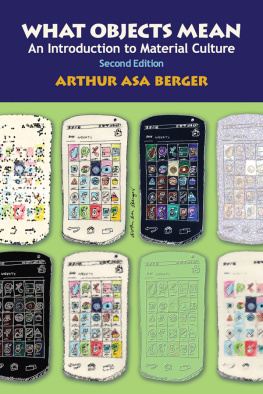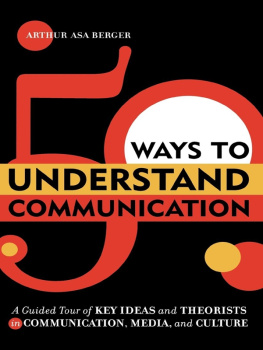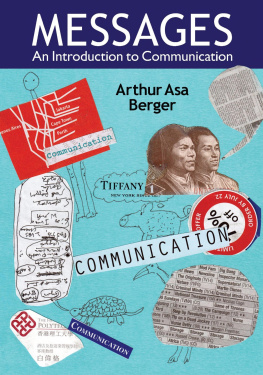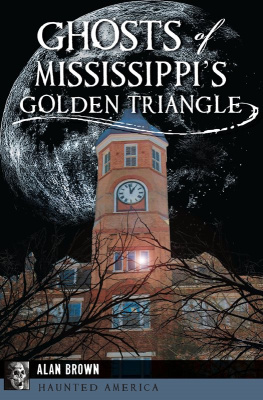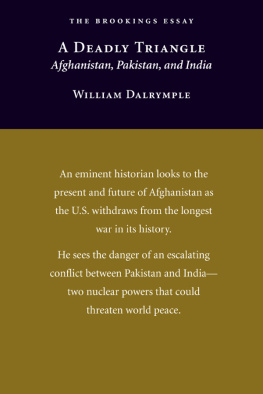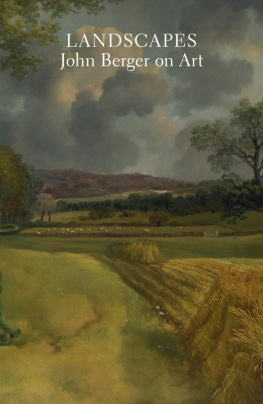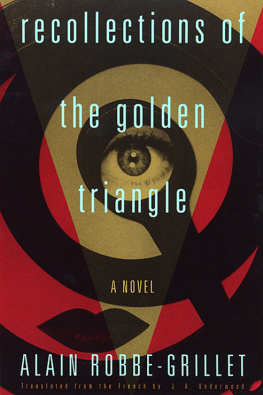First published 2008 by Transaction Publishers
Published 2017 by Routledge
2 Park Square, Milton Park, Abingdon, Oxon OX14 4RN
711 Third Avenue, New York, NY 10017, USA
Routledge is an imprint of the Taylor & Francis Group, an informa business
Copyright 2008 by Taylor & Francis.
All rights reserved. No part of this book may be reprinted or reproduced or utilised in any form or by any electronic, mechanical, or other means, now known or hereafter invented, including photocopying and recording, or in any information storage or retrieval system, without permission in writing from the publishers.
Notice:
Product or corporate names may be trademarks or registered trademarks, and are used only for identification and explanation without intent to infringe.
Library of Congress Catalog Number: 2007048941
Library of Congress Cataloging-in-Publication Data
Berger, Arthur Asa, 1933-
The golden triangle : an ethno-semiotic tour of present-day India /
Arthur Asa Berger.
p. cm.
Includes bibliographical references and index.
ISBN 978-1-4128-0787-6
1. Rajasthan (India)--Description and travel. 2. Tourism--Social aspects--India--Rajasthan. I. Title.
DS485.R2B38 2008
302.209544--dc22
2007048941
ISBN 13: 978-1-4128-0787-6 (pbk)
For Kaye S. Chon
No state in India is as rich in magnificent palaces and forts, colourful festivals and bazaars, as Rajasthan. Stretching 342,000 sq. km (132, 047 sq miles), the state is bisected by the Aravalli Range, which runs diagonally from the northeast to the southwest. Its main river is the Chambali. The Thar Desert, which covers western Rajasthan, was once ruled by three great kingdomsJaisalmer, Jodhpur, and Bikaner. Shekhwati, with its painted havelis, is in the semi-arid north while the eastern plains have the bustling state capital, Jaipur, and the Ranthambore National Park, famous for its tigers.
DK Eyewitness Travel Guides, India
Contents
Foreword
India has few important towns. India is the country, fields, fields, then hills, jungle, hills and more fields. The branch line stops, the road is only practicable for cars to a point, the bullock-carts lumber down the side tracks, paths fray out into the cultivation and disappear near a splash of red paint. How can the mind take hold of such a country? Generations of invaders have tried, but they remain in exile. The important towns they build are only retreats, their quarrels the malaise of men who cannot find their way home. India knows of their trouble.
E. M. Forster, A Passage to India
Researching Rajasthan
This volume is not a traditional guidebook to Rajasthan offering lists of good hotels and restaurants, along with information about cities and sites of interest. It is, instead, an ethnographic and socio-semiotic study of Rajasthan culture. But since it deals with many of the most important tourist sites and aspects of culture in Rajasthan that are of interest to tourists, it will considerably enhance the experience of anyone visiting The Golden Triangle and Rajasthan. So I like to think that it is a tourism guide in a more profound sense of the term guide.
Many people are not familiar with the terms semiotics and ethnography, so let me say something briefly about ethnography here. I will discuss semiotics later in the book.
Ethnographic Analysis
Ethnography is a form of social science research that uses participant observation as the basic means of understanding whatever is being studied. It is a form of research in which the experiences of the researcher play an important role and are the basis for whatever conclusions the researcher makes. The term ethnography means, literally speaking, a picture (graphy) of a people (ethnos). So this book is based on my experiences in Rajasthan and my interpretations of these experiences.
In his classic work, Tristes Tropiques, the great anthropologist Claude Lvi-Strauss explains how he suddenly came to recognize the importance of ethnographic analysis. He writes (1970):
It may seem strange that I should so long have remained deaf to a message which had after all been transmitted for me ever since I first began to read philosophy, by the masters of the French school of sociology. The revelation did not come to me, as a matter of fact, till 1933 or 1934 when I came upon a book which was already by no means new: Robert H. Lowies Primitive Society. But instead of notions borrowed from books and at once metamorphosed into philosophical concepts I was confronted with an account of first-hand experience. The observer, moreover, had been so committed as to keep intact the full meaning of his experience. (pp. 62-63)
First-hand experience and observation, then, is the basis of ethnographic researcha methodology commonly employed by anthropologists and other kinds of social scientists. And this book contains my firsthand experiences in The Golden Triangle and Rajasthan, which are often tied to, and supported by, insights by historians and other kinds of scholars about Rajasthan and India.
The Design of the Book
The first part of this book deals with tourism in Rajasthan and India as tourist destinations and considers why people travel to countries such as India and states such as Rajasthan. It also deals with sociological and anthropological analyses of different kinds of tourists and relates these discussions to tourism in India and to Indian culture. I offer some statistics on tourism in Indiastatistics, I should point out, whose accuracy must remain somewhat suspect. I also contrast and compare India, which is a hierarchical society, with America, which is an egalitarian onein theory if not always in practice. And I apply the theories of a social anthropologist, Mary Douglas, and other social scientists, about cultures and lifestyles to India and the choice tourists make to travel there, or anywhere else.
This part of the book deals with research I carried out before coming to India; it focuses on images of India in the popular mind and on typical tours to Rajasthan. It might be described as Imaginary India, or the India that one finds in books and on the Internet, where there are chat rooms and blogs on India. India currently has an advertising campaign based on the slogan Incredible !ndia, which I discuss in the second part of the book on Semiotic Rajasthan, where I offer a brief discussion of semiotic theory and apply it to a number of aspects of life in Rajasthan and India that struck my attention.
The last part of the book deals with Remembered Rajasthan, and with my experiences as I traveled there. I kept notes on our trip and have used them to write this section of the book. I suggest that travelers generally pass through three stages when it comes to visiting a foreign country: one involves anticipating the trip, the second involves taking the trip, and the third involves remembering the trip. These three stages form the heart of this book.




